Photo Page Lengai 23. - 27. July 2001Roby Carniel and Marco Fulle spent the week of 23.-30.7.2001 in the summit crater of Ol Doinyo Lengai. Although during the dry season
some tourists reach the summit for one or two hours every week, the only way to see varied magmatic activity is to spend several days in
the crater. This is done only once or twice per year by teams of scientists.
However, we believe that none of these ever observed what Roby and Marco had the luck to see: a huge paroxysm from a set of four vents
lasting 36 hours and emitting lava at a rate of about 2-5 cubic meters per second. This amount would be typical of a moderate basaltic
eruption, but it is enormous for the extremely fluid natrocarbonatitic lava of this volcano.
In this page, we show the start of the paroxysm. In another we document the unique spectacle during an unforgettable night when Roby and
Marco felt as if they were on an alien planet. To give a sense of the perspective, camera lens focal lengths are given (i.e. f=28mm). As
usual the pictures on this page link to larger photos (about 40 to 140 KB). All times are local (GMT + 3 hr). |
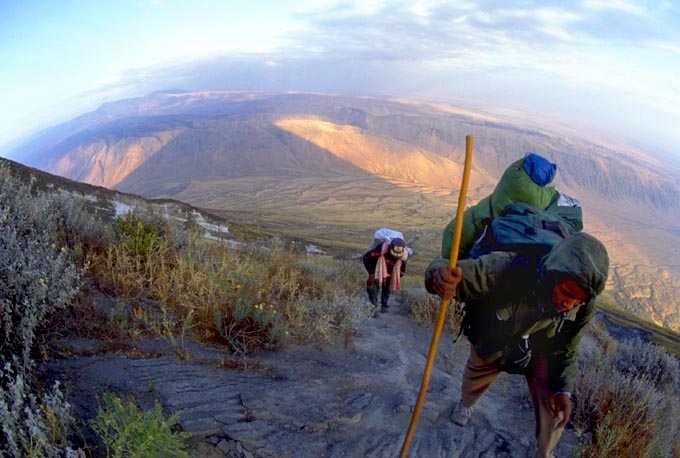 23. July 07h, fish-eye photo (diagonal 180°). Our Maasai porters climb Lengai while its great shadow extends over the Rift Valley. | 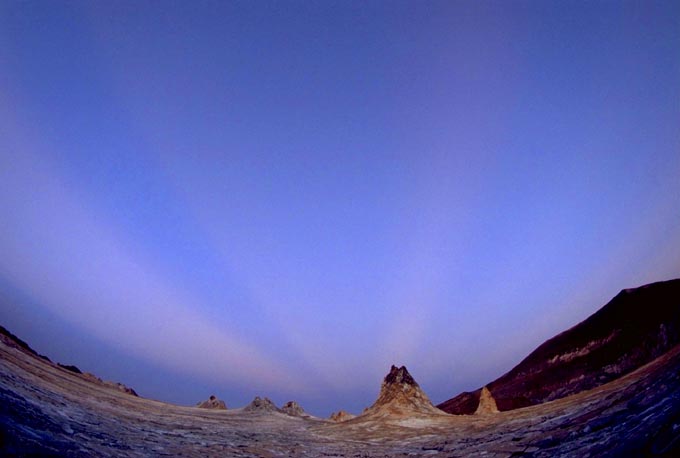 24. July 18h, fish-eye photo (diagonal 180°). Anticrepuscolar rays crown the phantastic landscape of Lengai's crater. | 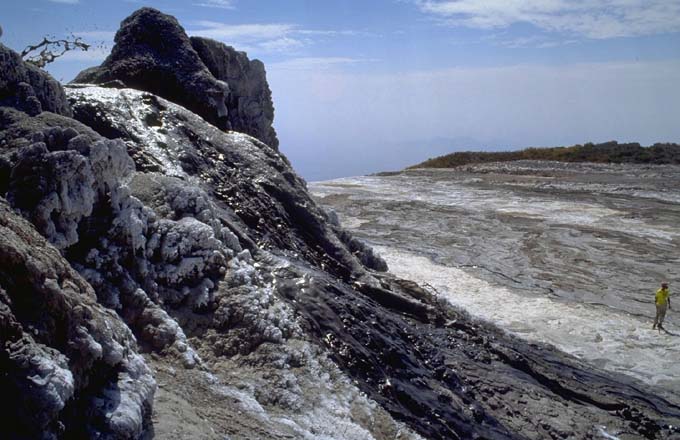 27. July 14h, f=28mm. The paroxysm starts with magma bubbles (top left) and lava falls (right towards Paulo) from T49C. | 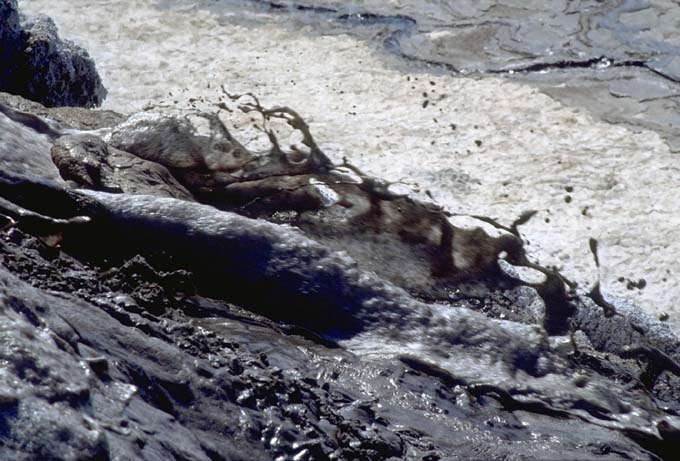 14h, f=135mm. The fall of water-like lava increases in strength, splashing down the hornito T49C slopes. |
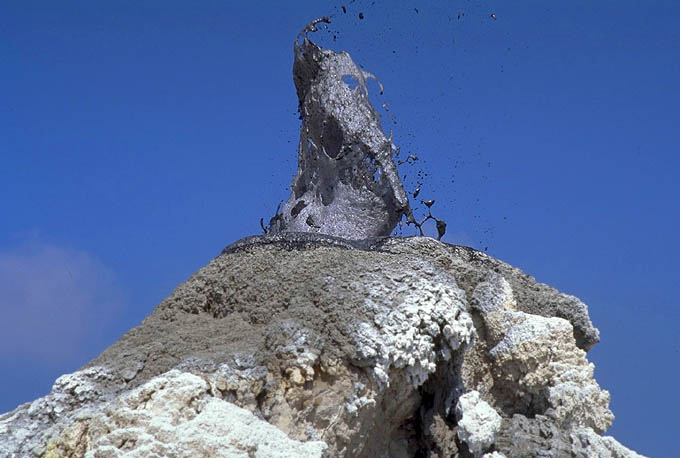 15h, f=135mm. Suddenly, after T49C and T49D, also the top of T49B starts to erupt a silvery foam of highly liquid lava. | 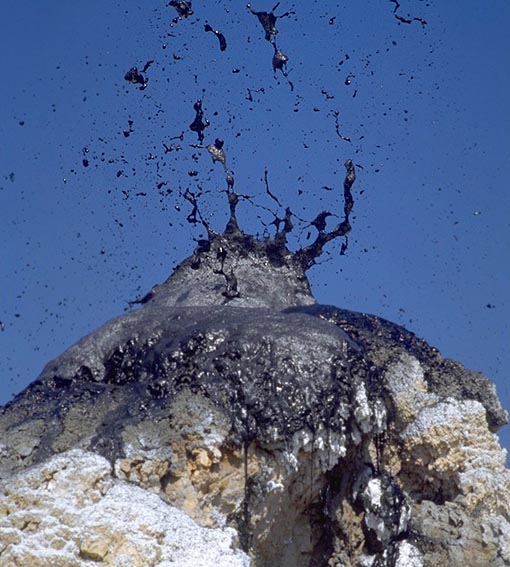 15h, f=135mm. Magma bubbles explode at the top of T49B, while liquid drops of black lava fall down the hornito's white slopes. | 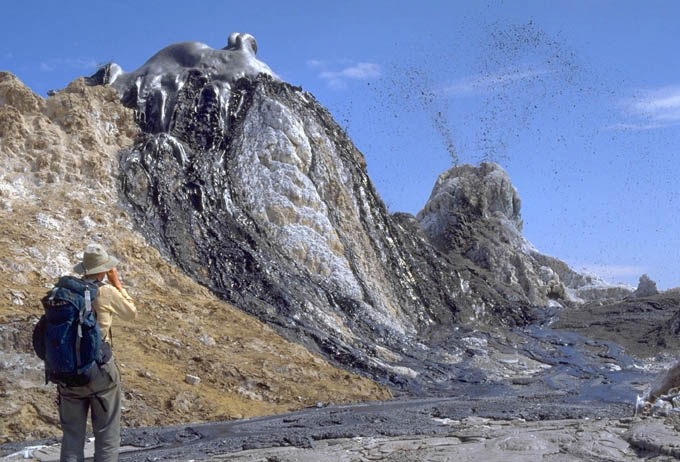 16h, f=50mm. Fred Belton admires what even he could never have imagined: strong jets from T49D and effusive dome on T49B. | 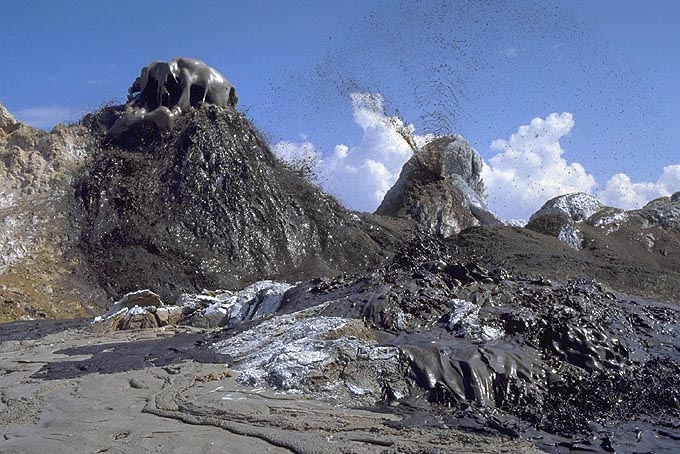 16h, f=50mm. Suddenly, also the lava lake T49E becomes active with strong fountains from its center, filling it in a few seconds. |
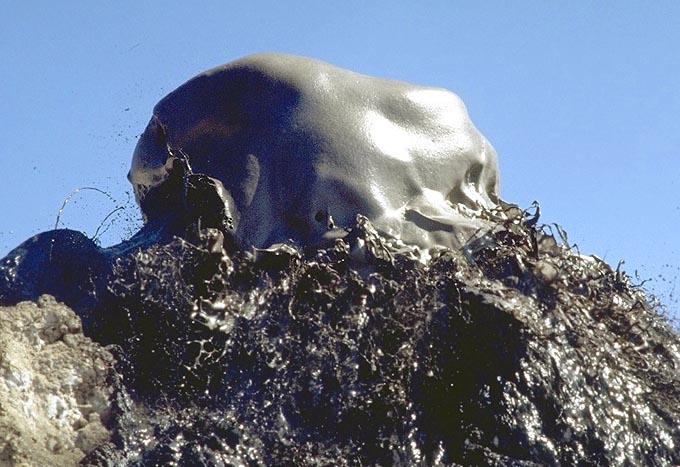 16h, f=135mm. The effusive dome on T49B becomes a pulsating monster of silvery foam ejecting several cubic meters per second of molten lava. | 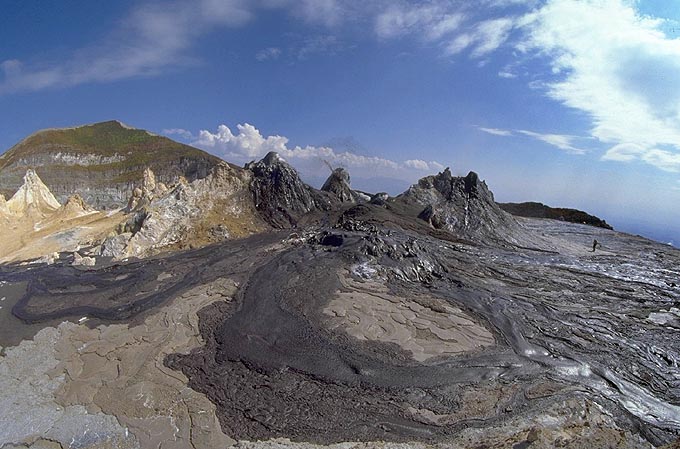 17h, fish-eye photo (diagonal 180°) from T40C top. Fred Belton (right of T49C) observes two lava flows advancing towards the N rim (right), while another is going towards the E rim (left). | 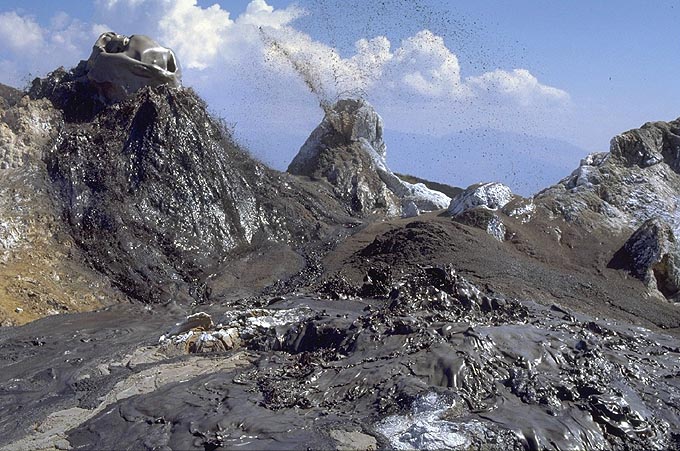 17h, f=50mm from T40C top. At the paroxysm's climax, more than five cubic meters per second are ejected by the three violently active vents of T49. | 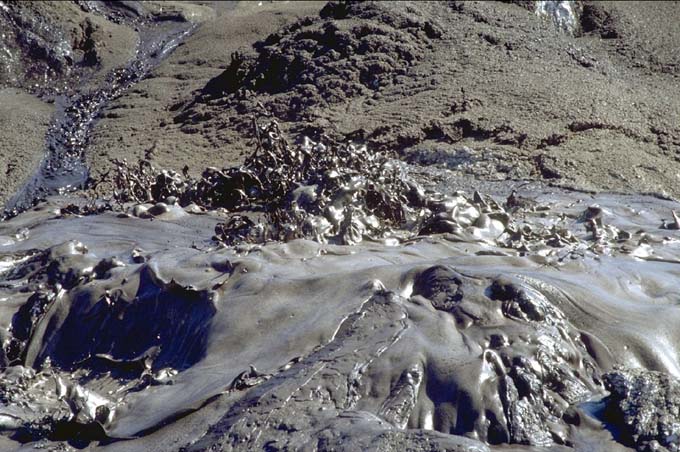 17h, f=135mm from T40C top. Zoom on the fountain at the center of lava lake T49E, which is fed by an independent magma conduit. |
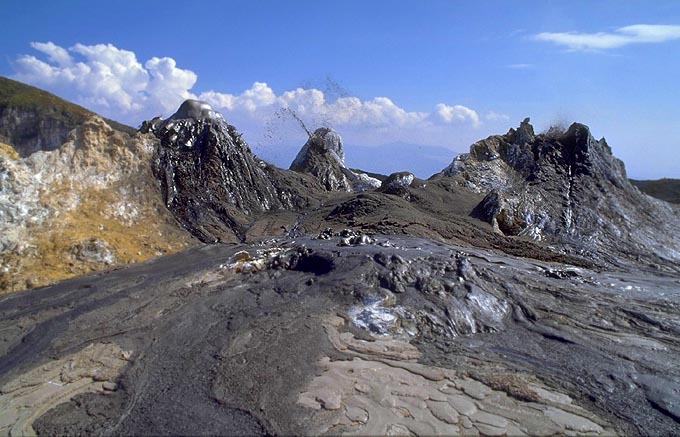 17h, f=28mm from T40C top. A showcase of volcanological phenomena: effusive dome on T49B (left), lava jets from T49D (center top), lava fountain in lava lake T49E (center), and strombolian bursts from T49C (right). | 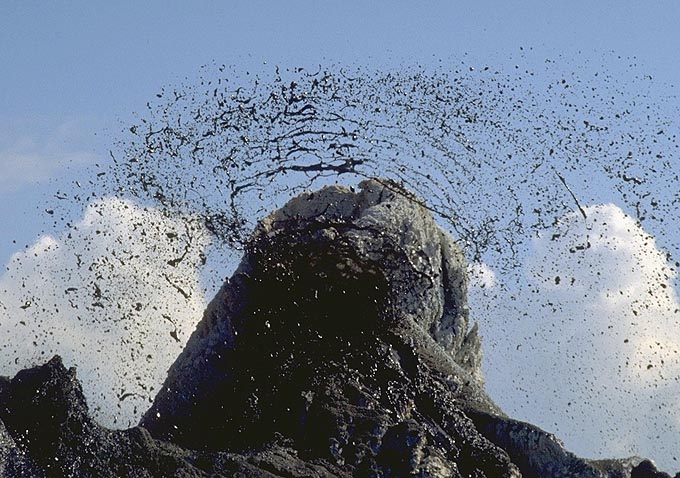 17h, f=135mm. The jets from T49D became pulsed at times, so that the hornito seems to erupt chains of lava tears in the sky. | 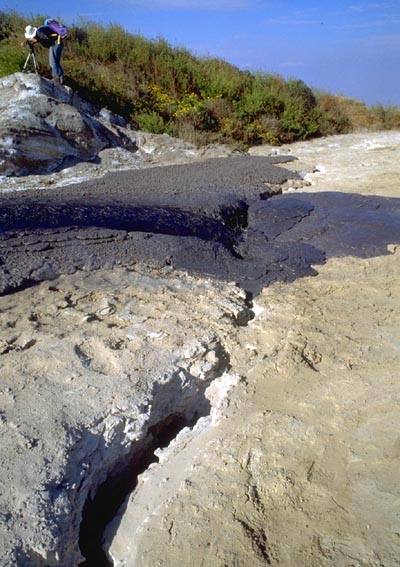 17h, f=28mm. Roby films the huge lava river which, for several hours, has disappeared into a fissure twenty meters from Lengai's E rim without reappearing anywhere: Where is all the lava going? | 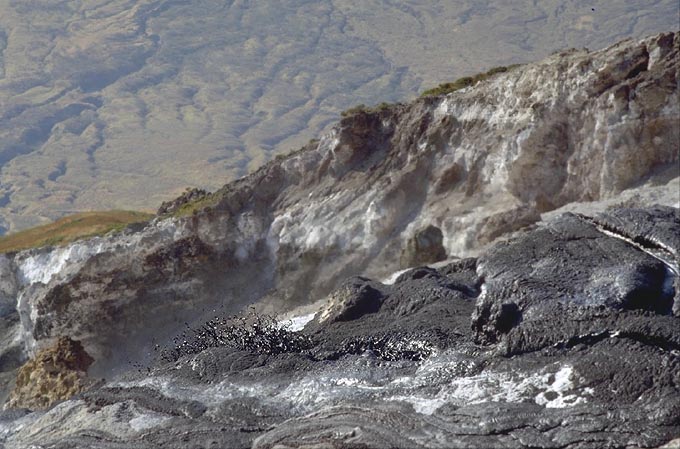 17h, f=135mm. On the N rim, the lava flow from T49E descends the slopes of Lengai in spectacular falls for hundreds of meters. Rift Valley in the background. |
|